Snake geriatrics
The Butler’s garter snake is on her last legs (so to speak). For a few months now she’s been growing a lump in her midsection that looks identical to the liver tumour that killed Big Momma, my extraordinarily fecund female red-sided garter snake, in 2002. It’s awfully big now, almost as big as Big Momma’s, but Big Momma was a much bigger snake. And after her last shed, we discovered that her tail has withered almost completely, which is something I’ve never seen before. It won’t be long for her, I think.
But, like Big Momma was in 2002, the Butler’s garter is old. For her species, she’s preposterously old: she was born in the summer of 2000, which makes her 10½ years old. Her sister died nearly five years ago, and that was from age-related causes. So I’m not at all upset that the Butler’s garter snake is dying now, because she’s had a better, longer run than almost every other member of her species in captivity. For some time I thought she held the longevity record, but I’m no longer sure that’s the case. In any case, I’m not ashamed: we’ve managed to keep her alive for more than 10 years (I got her in October 2000), and that’s saying something.
In fact, because we stopped buying snakes several years ago, and because many of the snakes who’ve dropped dead on us were more recent acquisitions, our snake collection is looking downright geriatric. The average age of our snakes is, in fact, nine years old (the median is eight and a half). That’s a rough estimate, because I’ve had to guess the exact age of several of our snakes who arrived as adults, and I’ve assumed each snake was born in the middle of the year — I know the year of birth, but not necessarily the month. But the point is still there: these are not young snakes. Most were bought at about the same age (i.e., young) and at about the same time, so these snakes represent a cohort of sorts.
Which means they’re going to start dying off at roughly the same time. Now garter snakes as a rule don’t live as long as corn, rat or pine snakes, so a 10-year-old garter snake is much closer to the end than a 10-year-old corn snake, which might easily live another five or ten years. So the snakes’ departure from our household is going to be a bit more spread out than their arrival was. But it’s going to happen. There are three garter snakes in our collection, including the Butler’s, who are more than 10 years old — Extrovert, the female wandering garter snake, will be 12 this summer — and I don’t expect to have them much longer. And George the plains garter, whose age I can only guess at, is as handicapped as ever and still not dead.
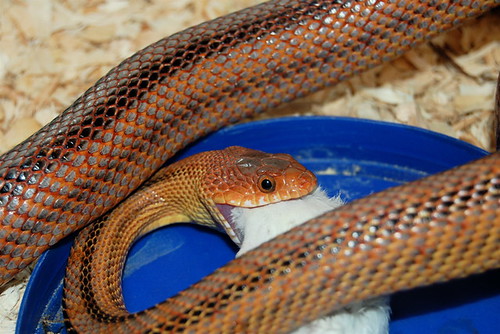
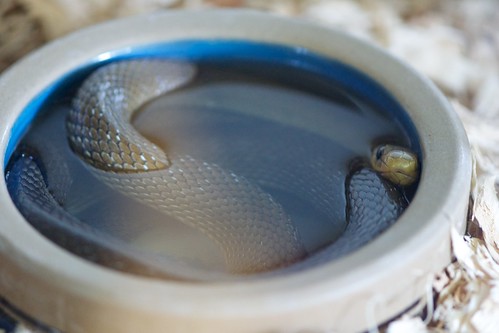


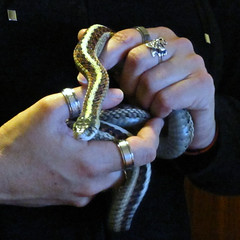
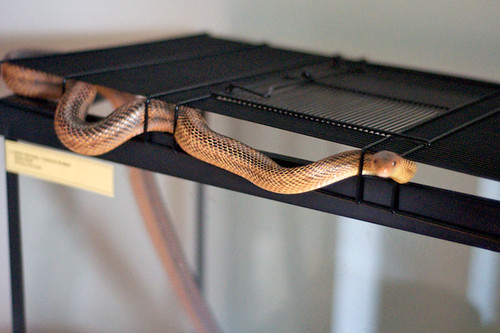
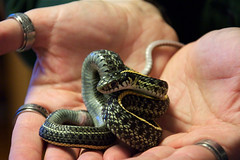
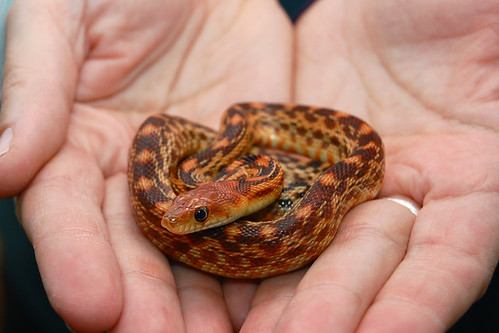

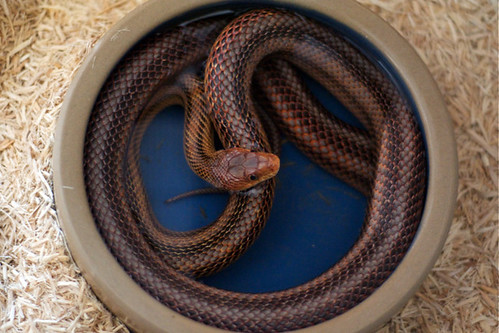
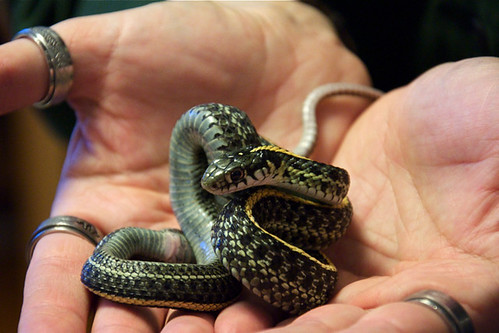
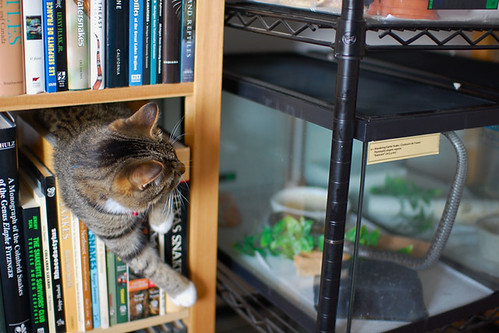
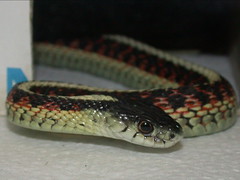
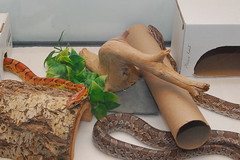
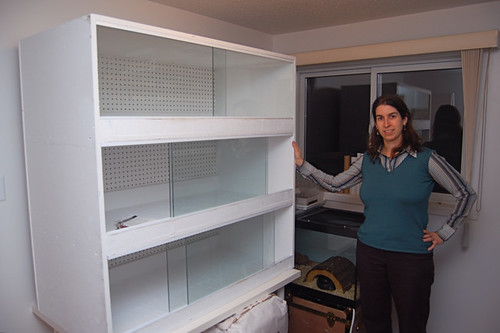

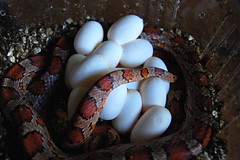

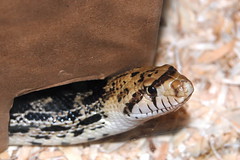
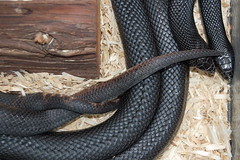
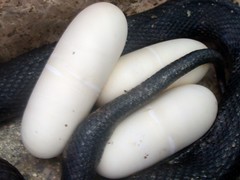
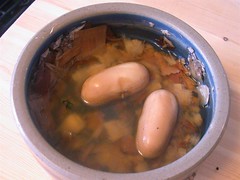
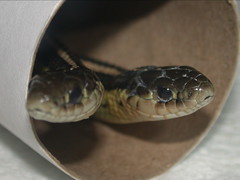
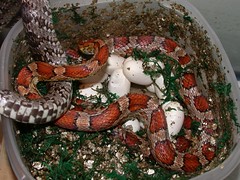

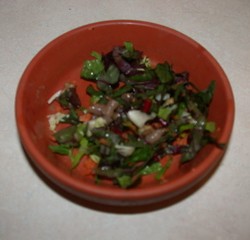 The Iron Chef is offering one dish. The bitterness of the organic mixed greens is gently scented by the slime of the chopped nightcrawler, while the grated carrot and chard add essential nutrients for a growing turtle.
The Iron Chef is offering one dish. The bitterness of the organic mixed greens is gently scented by the slime of the chopped nightcrawler, while the grated carrot and chard add essential nutrients for a growing turtle.